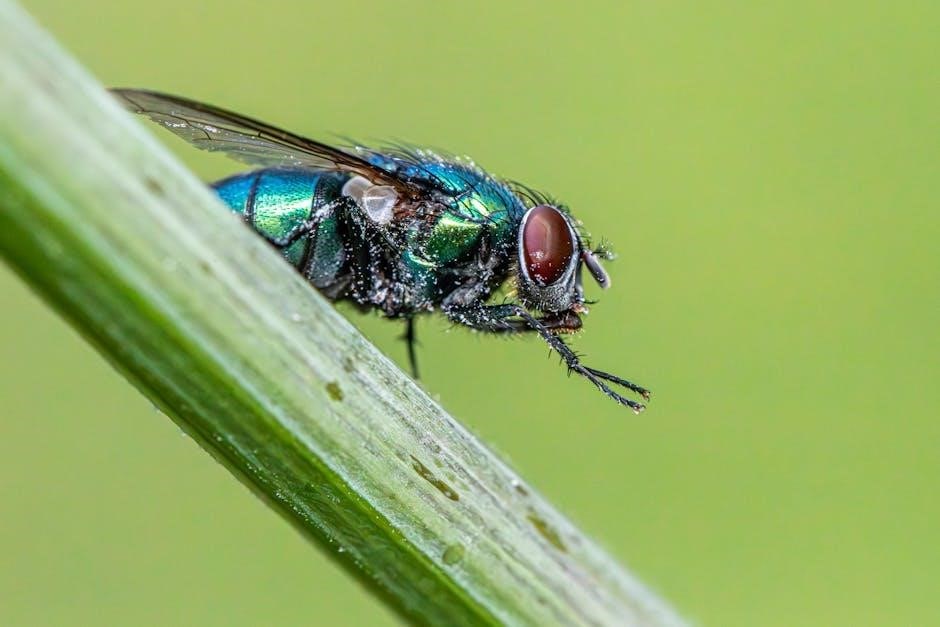Cataclysm Herbalism introduces new herbs and streamlined gathering, enhancing gameplay. Key herbs like Cinderbloom and Stormvine thrive in zones such as Mount Hyjal, fueling crafting professions and the WoW economy.
1.1 Overview of Herbalism in Cataclysm
In World of Warcraft: Cataclysm, Herbalism remains a vital profession for crafting potions, flasks, and other essential items. The expansion introduced new herbs like Cinderbloom, Stormvine, and Twilight Jasmine, which thrive in zones such as Mount Hyjal and Sholazar Basin. Herbalism in Cataclysm simplified the gathering process by removing ultra-rare herbs like Frost Lotus, making it more accessible. Players can track herbs using the “Find Herbs” spell, which highlights nearby plants on the mini-map; This skill is particularly valuable for Alchemy and Cooking, as high-demand herbs fuel the WoW economy. With streamlined mechanics and diverse uses, Herbalism in Cataclysm offers both practicality and profitability for crafty players.
1.2 Importance of Herbalism in WoW Economy
Herbalism plays a pivotal role in the World of Warcraft economy, as herbs are essential for crafting potions, flasks, and other valuable items. High-demand herbs like Cinderbloom and Stormvine are crucial for Alchemy, which fuels raiding and PvP activities. The consistent need for these materials creates a thriving market, making Herbalism a profitable profession. Players who master herb farming in zones like Mount Hyjal and Sholazar Basin can dominate the economy, supplying guilds and other players. Additionally, Herbalism supports Cooking and Inscription, further integrating it into the game’s economic framework. This makes Herbalism not just a crafting skill but a cornerstone of WoW’s in-game trade system.
1.3 Unique Herbs Introduced in Cataclysm
Cataclysm introduced several unique herbs that revolutionized crafting and gameplay. Cinderbloom, known for its fiery properties, is widely used in Alchemy for high-level potions. Stormvine, with its versatility, is sought after for both potions and cooking. Azshara’s Veil, a rare herb, is prized for its role in creating powerful flasks. Heartblossom, found in lush zones like Sholazar Basin, is a key ingredient in high-end Alchemy recipes. Whiptail, a fast-growing herb, is ideal for mass production of potions. Twilight Jasmine, despite its rarity, is highly valued for its use in flasks and elixirs. These herbs not only enhanced gameplay but also became integral to the WoW economy, making Herbalism a vital profession for crafters and players alike.
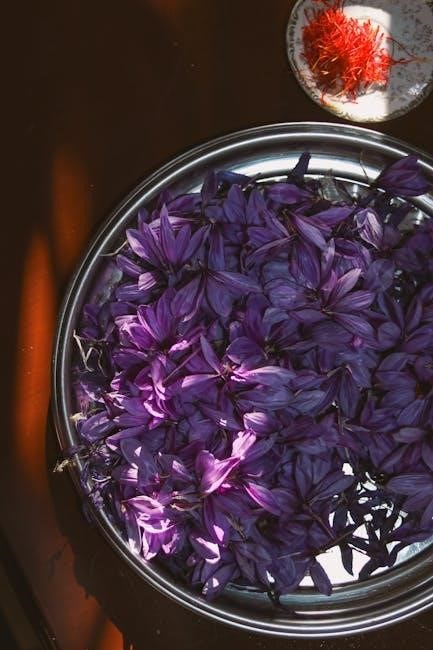
Training Herbalism
Training Herbalism involves finding a profession trainer in major cities or neutral zones. They teach the basics, allowing players to gather herbs and use the “Find Herbs” ability effectively.
2.1 Finding Herbalism Trainers
Finding Herbalism trainers is essential to begin your journey. In Orgrimmar, Jandi is the primary trainer, while Martha Alliestar serves Undercity. Thunder Bluff’s trainer is Komin Winterhoof, and Tirisfal Glades has Faruza. For Horde, Mishiki in Durotar is also available. Alliance players can train with herbalism experts in Stormwind City, such as Auntie May. Neutral zones like Shattrath City or Dalaran may also have trainers. These NPCs teach the basics, including the “Find Herbs” ability, which highlights nearby herbs on your mini-map. Ensure your character meets the minimum level requirements to learn Herbalism. Trainers are typically located in capital cities or major hubs, making them easy to find.
2.2 Herbalism Trainers by Faction
Herbalism trainers are faction-specific, catering to both Horde and Alliance. For the Horde, trainers include Jandi in Orgrimmar, Martha Alliestar in Undercity, and Komin Winterhoof in Thunder Bluff. Tirisfal Glades offers Faruza, while Mishiki in Durotar also provides training. Alliance players can train with herbalism experts in Stormwind City, such as Auntie May. Each trainer is strategically located in major cities, ensuring accessibility. They provide essential skills and the “Find Herbs” ability, crucial for gathering herbs efficiently. These trainers are easily identifiable and ready to assist, helping players master the art of Herbalism within their faction’s territories.
2.3 Herbalism Trainers in Neutral Zones
In neutral zones, players can access shared herbalism trainers. These trainers are located in areas like Sholazar Basin and Borean Tundra, accessible to both Horde and Alliance. They provide essential skills and the “Find Herbs” ability. Neutral trainers ensure that regardless of faction, all players can learn and master herbalism. These locations are strategically placed in high-traffic areas, making it convenient for players to train while exploring or farming herbs. Neutral trainers offer the same services as faction-specific ones, promoting equality in skill progression. This accessibility supports a balanced gameplay experience, allowing all players to excel in herbalism without faction-based restrictions. Neutral zones thus play a crucial role in the herbalism journey for all characters in Cataclysm Classic.
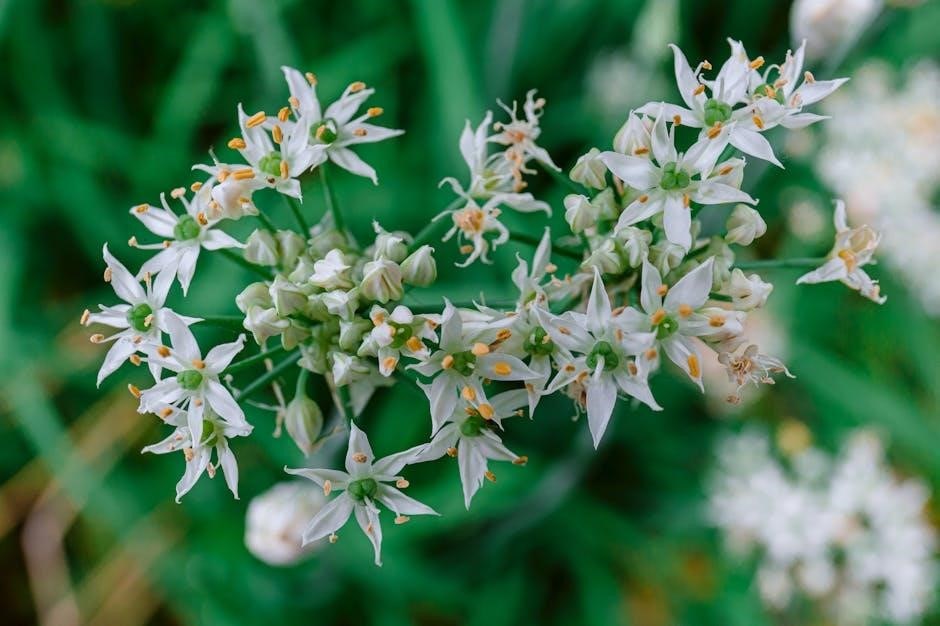
Leveling Herbalism
Mastering herbalism in Cataclysm involves progression through skill levels, from 1 to 525. Each stage unlocks new herbs and enhances gathering efficiency, optimizing resource collection for crafting.
3.1 Leveling from 1 to 75
Leveling Herbalism from 1 to 75 is straightforward, focusing on gathering common herbs like Earthroot, Peacebloom, and Silverleaf. These herbs are abundant in starter zones such as Elwynn Forest, Westfall, and Tirisfal Glades. As you gather, your skill increases, unlocking higher-level herbs like Mageroyal and Briarthorn at around skill level 50. Continue herbing in zones like Hillsbrad or Stonetalon Mountains to reach 75. Remember to use the Find Herbs ability to locate nodes efficiently. This foundational stage is crucial for building your skill and preparing for more complex herbs in later levels. Optimize your route to minimize travel time and maximize herb collection.
3.2 Leveling from 75 to 200
Leveling Herbalism from 75 to 200 focuses on gathering mid-tier herbs such as Bruiseweed, Wild Steelbloom, and Grave Moss. These herbs are commonly found in zones like Arathi Highlands, the Hinterlands, and Feralas. As you progress, you’ll encounter herbs like Gromsblood and Ghost Mushroom, which are abundant in darker, shaded areas like Felwood and Western Plaguelands. Use the Find Herbs ability to locate nodes efficiently and optimize your route to minimize travel time. This range is ideal for refining your herbing technique and building a stockpile of materials for crafting professions. Consistent herbing in these zones will ensure a smooth progression to 200.
3.3 Leveling from 200 to 300
Leveling Herbalism from 200 to 300 involves gathering higher-tier herbs such as Sorrowmoss, Dreamfoil, and Mountain Silversage. These herbs are typically found in contested or high-level zones like Winterspring, Felwood, and the Burnt Scorched Vale. Use your Find Herbs ability to locate nodes efficiently and focus on farming in areas with high herb density; This range is crucial for mastering the skill and preparing for more challenging herbs. Stockpile materials for later use in crafting professions like Alchemy or Inscription. By consistently herbing in these zones, you’ll reach 300 Herbalism, unlocking access to rare Cataclysm herbs and enhancing your in-game economy opportunities.
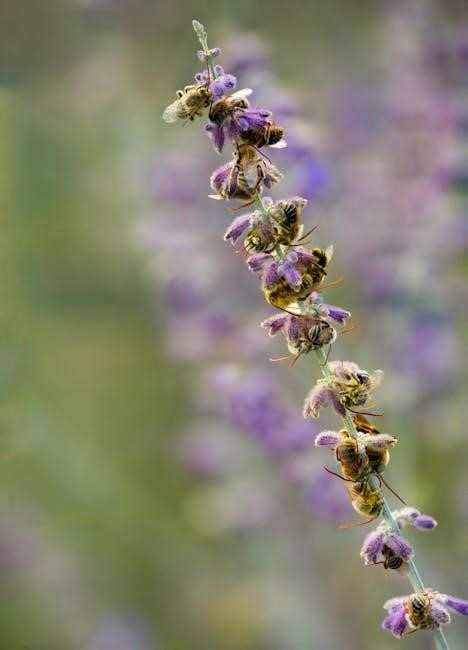
3.4 Leveling from 300 to 425
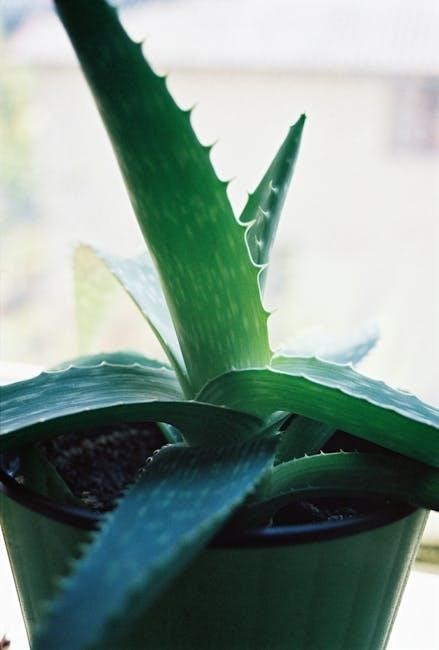
Leveling Herbalism from 300 to 425 in Cataclysm focuses on gathering rare herbs like Cinderbloom, Stormvine, and Azshara’s Veil. These herbs are abundant in zones such as Mount Hyjal, Sholazar Basin, and the Borean Tundra. Use your Find Herbs ability to track nodes efficiently, as competition for these resources can be fierce. This range is critical for mastering the skill, as it unlocks access to higher-tier herbs and crafting materials. Farming consistently in these zones will help you reach 425 Herbalism, enabling you to gather the rarest herbs in the game and support high-level crafting professions like Alchemy and Inscription. Stay focused and patient, as this range requires dedication to achieve mastery.
3.5 Leveling from 425 to 525
Reaching the final stages of Herbalism, leveling from 425 to 525 requires gathering the rarest Cataclysm herbs, such as Twilight Jasmine and Heartblossom. These herbs are primarily found in higher-level zones like Mount Hyjal, Sholazar Basin, and the Borean Tundra. Use your Find Herbs ability to locate nodes efficiently, as competition for these resources can be intense. Focus on farming in areas with dense herb populations to maximize your gains. This range is crucial for achieving mastery, as it allows you to craft high-end items for professions like Alchemy and Inscription. Stay persistent, as consistent farming will help you reach 525, the peak of Herbalism in Cataclysm.
Cataclysm Herbs
Cataclysm introduced six unique herbs: Cinderbloom, Stormvine, Azshara’s Veil, Heartblossom, Whiptail, and Twilight Jasmine. These herbs are essential for crafting potions, flasks, and other high-demand items in the WoW economy.
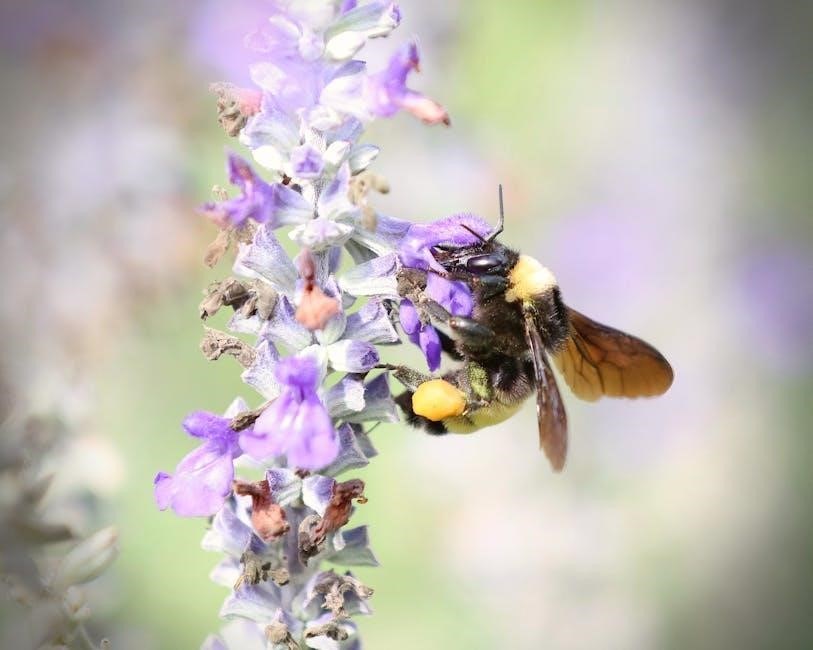
4.1 Cinderbloom
Cinderbloom is a versatile herb introduced in Cataclysm, thriving in volcanic regions like Mount Hyjal. It requires a minimum Herbalism skill of 425 to gather and is highly sought after for crafting potent flasks and potions. Farmers often prioritize Cinderbloom due to its abundance in open areas, making it easier to collect in large quantities. Popular farming routes include circling the zone’s edges and focusing on volcanic ridges. Competition can be fierce, so timing your farming during off-peak hours is recommended. Cinderbloom plays a crucial role in the WoW economy, particularly for Alchemists crafting high-demand items. Its availability and utility make it a cornerstone of Cataclysm Herbalism.
4.2 Stormvine
Stormvine is a rare and valuable herb in Cataclysm, found in lush, tropical zones such as Sholazar Basin and Stranglethorn Vale. It requires a Herbalism skill of at least 425 to gather and is highly sought after for crafting powerful flasks and potions. Stormvine thrives in shaded areas, often growing near trees and large foliage, making it a bit more challenging to locate compared to other herbs. Farmers are advised to focus on routes that cover dense vegetation and riverbanks. Due to its rarity, competition for Stormvine can be intense, especially in high-demand zones. Despite the challenges, its high value in the WoW economy makes it a rewarding herb to farm, particularly for Alchemists and potion crafters.
4.3 Azshara’s Veil
Azshara’s Veil is a rare and highly sought-after herb in Cataclysm, primarily found in the aquatic and misty regions of zones like Mount Hyjal and Ashenvale. It requires a Herbalism skill of at least 425 to gather and is prized for its use in crafting high-level flasks and potions. This herb grows near water sources, such as riverbanks and lake shores, often hidden among tall grasses and flowers. Due to its rarity and demand, Azshara’s Veil is a valuable resource for Alchemists and players crafting potent consumables. Farmers should focus on routes that cover wetland areas and misty terrains to maximize their yield of this elusive herb.
4.4 Heartblossom
Heartblossom is a Cataclysm-specific herb renowned for its vibrant, flower-like appearance and high demand in the WoW economy. It requires a Herbalism skill of at least 425 to gather and is primarily used in Alchemy to craft potent flasks and potions. This herb thrives in lush, shaded areas, such as the forests of Ashenvale and the verdant zones of Mount Hyjal. Farmers should focus on routes that cover dense foliage and tree-lined paths, as Heartblossom often grows near the bases of large trees. Its scarcity and utility make it a valuable resource for crafters, especially those specializing in high-level consumables. The herb’s distinctive pink blossoms make it easier to spot in its native habitats.
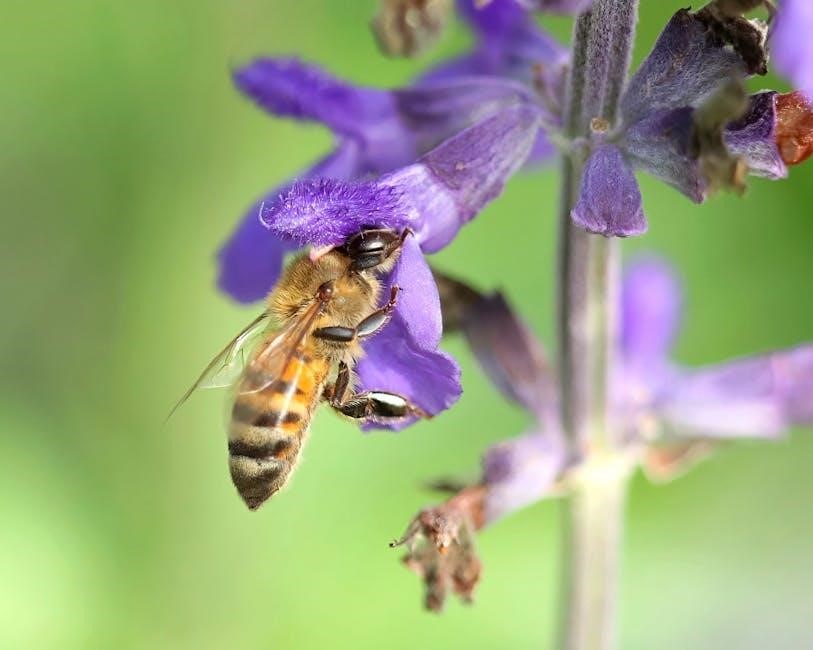
4.5 Whiptail
Whiptail is a distinctive Cataclysm herb, recognizable by its long, whip-like stems and vibrant green leaves. It requires a Herbalism skill of 425 to gather and is highly sought after for crafting agility-enhancing flasks and potions in Alchemy. Whiptail primarily grows in lush, open areas with abundant water sources, such as the Sholazar Basin and the Borean Tundra. Farmers should focus on routes near riverbanks and lakeshores, as the herb flourishes in these environments. Its growth pattern makes it easier to spot in open spaces compared to herbs that thrive in dense forests. Whiptail’s demand remains steady due to its role in high-level Alchemy recipes, making it a valuable herb for crafters and players alike.
4.6 Twilight Jasmine
Twilight Jasmine is a rare and valuable herb introduced in Cataclysm, requiring a Herbalism skill of 425 to gather. Known for its fragrant, purple-tinged flowers, it thrives in shaded, twilight-heavy areas like Ashenvale and Mount Hyjal. This herb is highly sought after for crafting powerful spellcaster flasks in Alchemy, making it a staple for raiders and PvPers. Twilight Jasmine grows near trees and in shaded pathways, often competing with other herbs like Azshara’s Veil. Farmers should focus on routes that loop through dense forests and twilight zones to maximize yield. Its rarity and high demand make it a profitable herb for those willing to invest time in farming it consistently.
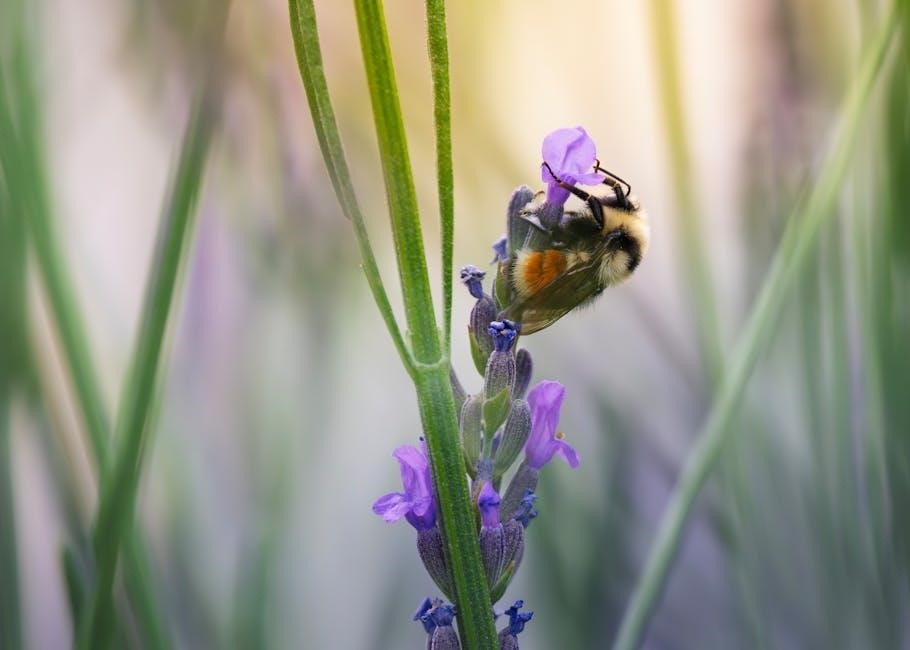
Herb Farming Locations
Cataclysm herbs thrive in diverse zones like Mount Hyjal, Sholazar Basin, Borean Tundra, Stranglethorn Vale, and Ashenvale, each offering unique herb species and farming opportunities.
5.1 Mount Hyjal
Mount Hyjal is a prime location for herb farming in Cataclysm, offering an abundance of Cinderbloom and Stormvine. This zone, designed for players around level 80-82, features lush terrain with open spaces, making it easy to navigate. Herbs grow densely in the region’s forests and along the riverbanks; To maximize efficiency, farm in a circular route, starting from the base camp and moving outward. Avoid competing with other players by focusing on less crowded areas. The zone’s layout allows for quick herb gathering, and the availability of Whiptail in some areas adds variety to your farming sessions. Mount Hyjal remains a top choice for herbalists due to its resource density and accessible terrain.
5.2 Sholazar Basin
Sholazar Basin is a lush, tropical zone in Cataclysm, ideal for farming high-level herbs like Adder’s Tongue, Goldclover, and Tiger Lily. The basin’s dense foliage and numerous clearings make it a hotspot for herbalism. Herbs grow abundantly along the lake shores and in the open grasslands. To optimize farming, focus on routes that cover the lake’s perimeter and the central regions. Adder’s Tongue is particularly common near water, while Goldclover thrives in the basin’s fertile soil. Tiger Lily can also be found in abundance, making this zone a versatile location for herbalists. Be mindful of competition, as Sholazar Basin is a popular farming spot. Its rich herb density makes it a key area for leveling Herbalism or stockpiling materials for crafting professions.
5.3 Borean Tundra
Borean Tundra is a prime location for farming herbs in Cataclysm, offering a mix of level 80 herbs. The flat, open terrain allows for quick traversal, making it easier to gather herbs efficiently. Herbs such as Goldclover, Tiger Lily, and Adder’s Tongue can be found here. The tundra’s vast, open spaces mean fewer obstacles, which speeds up the farming process. Additionally, the lower competition compared to other zones makes it an ideal spot for solo farming. Focus on routes that cover the tundra’s edges and central areas. The abundance of herbs and straightforward terrain make Borean Tundra a favorite among herbalists for leveling or stockpiling materials. This zone is particularly recommended for those seeking a less crowded environment.
5.4 Stranglethorn Vale
Stranglethorn Vale is a dense jungle teeming with high-demand herbs. The northern part, known as the Cape of Stranglethorn, is ideal for farming herbs like Liferoot and Goldclover. The southern section, the Cape of Stranglethorn, offers a variety of herbs such as Tiger Lily and Adder’s Tongue. The abundance of herbs and diverse routes make it a popular spot for herbalists. However, the dense foliage can slow down movement. Players often prefer the northern areas for faster farming due to less competition and easier navigation. The zone’s rich herb supply makes it a key location for crafting and selling materials in the WoW economy. Regular visits ensure a steady supply of valuable herbs for Alchemy and other professions.
5.5 Ashenvale
Ashenvale is a prime location for mid-level herb farming, offering abundant resources like Ashthorn, Grave Moss, and Lichbloom. The zone’s lush forests and open areas make it easy to navigate. Herbs grow densely along the roads and near ancient buildings, with Lichbloom being particularly common in the northern regions. The zone is recommended for players between levels 20-30, as the herbs align with skill progression. Competition can be high in well-known spots, so exploring less crowded areas, such as the southwestern parts near the river, can yield better results. Ashenvale is also ideal for crafting potions and reagents for Alchemy and other professions, making it a valuable spot for herbalists seeking consistent herb supplies.
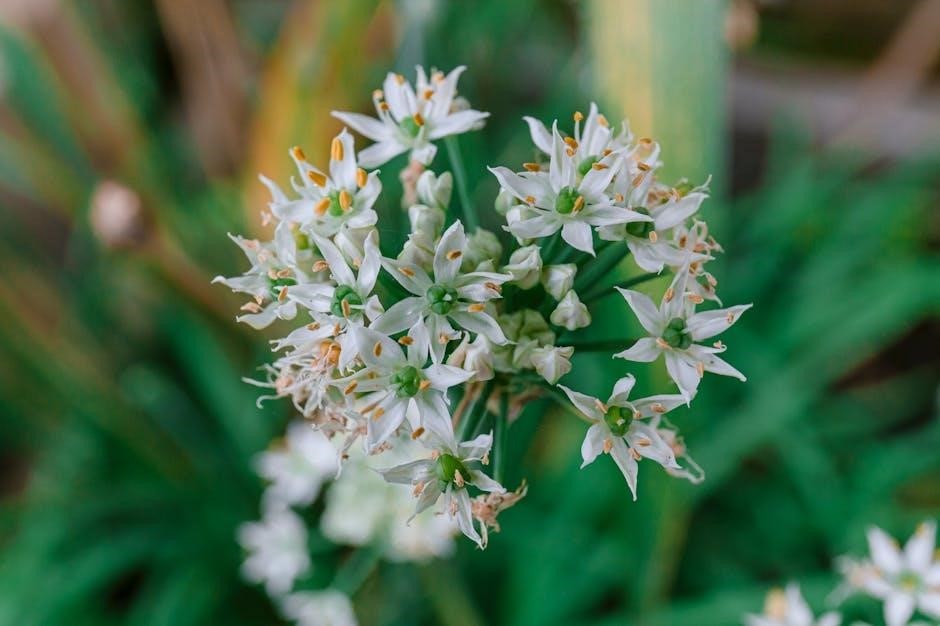
Herb Farming Strategies
Efficient routes, optimal timing, and tool usage maximize herb gathering. Utilize the Find Herbs spell and herbalism tools to streamline the process and increase yield effectively.
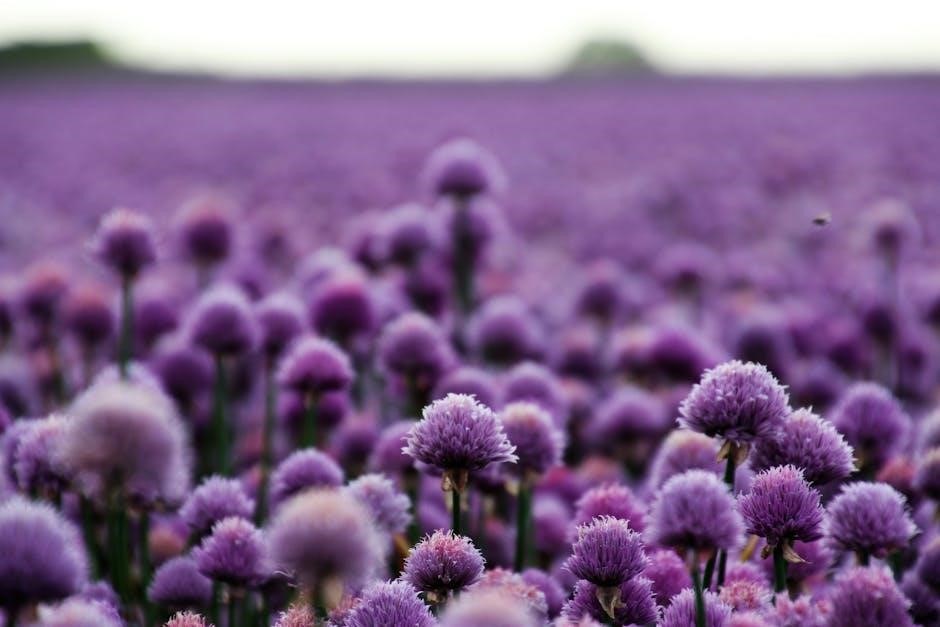
6.1 Best Routes for Herb Farming
The most efficient herb farming routes in Cataclysm focus on zones with high herb density and minimal competition. Mount Hyjal is ideal for Cinderbloom and Stormvine, offering a circular route through lush forests. Sholazar Basin is perfect for Adder’s Tongue and Goldclover, with its open fields and sparse terrain. Borean Tundra provides Winter’s Bite and Tiger Lily, with flat landscapes for quick traversal. Twilight Jasmine thrives in the Twilight Highlands, particularly around water sources. By mapping routes that loop through these zones, players can maximize herb yields while minimizing travel time. Always prioritize zones matching your herbalism skill level for optimal efficiency and XP gain.
6.2 Optimizing Herb Gathering
Optimizing herb gathering in Cataclysm involves strategic planning and efficient use of tools. Use the Find Herbs spell to locate plants quickly on your mini-map, reducing wasted time. Prioritize zones with high herb density, such as Sholazar Basin for Adder’s Tongue or Borean Tundra for Winter’s Bite. Plan routes that loop through the most fertile areas to minimize backtracking. Avoid crowded zones by farming during off-peak hours, ensuring fewer competitors. Additionally, use addons like GatherMate to track herb locations and optimize your path. Familiarize yourself with herbalism trends to focus on high-demand herbs, maximizing your gold income. By combining these strategies, you can gather herbs efficiently and stay ahead in the WoW economy.
6.3 Avoiding Competition
Avoiding competition while herb farming in Cataclysm is crucial for maximizing efficiency. Farm during off-peak hours when fewer players are active, reducing competition for herb nodes. Focus on lesscrowded zones like Ashenvale or Borean Tundra, which often have abundant herbs but fewer farmers. Use addons like GatherMate to track herb locations and plan routes that avoid populated areas. Coordinate with guildmates to spread out in different zones. Flying in remote regions can also help bypass competition, as many players stick to densely populated zones. By strategically timing and locating your farming sessions, you can gather herbs more effectively and avoid unnecessary competition, ensuring a steady supply of valuable materials for crafting or selling. This approach saves time and increases overall profitability in the WoW economy.
6.4 Using Herbalism Tools
Using the right tools can significantly enhance your herbalism experience in Cataclysm. The Find Herbs spell, automatically learned upon taking up herbalism, highlights nearby herbs on your mini-map, making them easier to locate. Addons like GatherMate and Herbalism Tracker can further optimize your farming by mapping herb locations and showing node positions. These tools help you plan efficient routes and avoid missing valuable herbs. Additionally, they can track herb spawns and provide alerts, reducing time spent searching. By utilizing these resources, you can maximize your herb-gathering efficiency, especially in competitive zones where herbs respawn quickly. This ensures you gather more materials in less time, improving your crafting and selling opportunities in the WoW economy.
Herbalism and Crafting Professions
Herbalism pairs seamlessly with crafting professions like Alchemy, Cooking, and Inscription, providing essential materials for potions, recipes, and inks, enhancing their respective crafting processes.
7.1 Alchemy and Herbalism
Alchemy and Herbalism are deeply interconnected, as herbs gathered through Herbalism are essential for crafting potions and elixirs in Alchemy. Herbs like Cinderbloom and Stormvine are used to create potent restorative potions, such as Healing Potions and Mana Potions, which are invaluable for raids and PvP. Herbalism provides the raw materials needed for Alchemy recipes, making it a cornerstone profession for any alchemist. This synergy allows players to craft items that boost health, mana, and stamina, enhancing performance in various in-game activities. Additionally, the combination of these professions enables the creation of flasks and elixirs, which provide long-term buffs. This partnership is crucial for players seeking to optimize their character’s performance and contribute to group success.
7.2 Cooking and Herbalism
Cooking and Herbalism share a natural synergy, as many herbs gathered through Herbalism are used in cooking recipes to create beneficial dishes. Herbs like Heartblossom and Whiptail are essential for crafting meals that provide stamina, agility, or intellect buffs. These dishes are particularly useful for players seeking to optimize their performance in raids, dungeons, or PvP. By combining Herbalism with Cooking, players can create nourishing food that enhances their character’s abilities. This synergy also allows for self-sufficiency, as herbalists can gather the necessary ingredients for cooking without relying on the auction house. This combination is especially valuable for players looking to maximize their in-game efficiency and enjoy a more independent playstyle. Together, these professions enhance both gameplay and character performance effectively.
7.3 Inscription and Herbalism
Inscription and Herbalism complement each other through the creation of magical items. Herbs like Cinderbloom and Stormvine are used to craft inks and pigments for glyphs, scrolls, and other inscribed items. This synergy allows players to craft powerful glyphs that enhance spells and abilities. Herbalism provides the raw materials needed for Inscription, enabling players to create items like Glyph of Arcane Intellect or Glyph of Renewed Proto. The combination of these professions empowers players to craft materials independently, reducing reliance on the auction house. Additionally, certain glyphs require specific herbs, making Herbalism a vital resource for Inscription. This partnership enhances gameplay by allowing players to create unique and powerful items tailored to their needs.
Mastering Cataclysm Herbalism requires skill and strategy to gather rare herbs efficiently, enhancing both crafting and economic success in the WoW universe, as highlighted in guides.
8.1 Final Tips for Mastering Herbalism
Mastering Herbalism in Cataclysm requires strategic planning and efficient routes. Focus on high-demand herbs like Cinderbloom and Twilight Jasmine, as they yield significant profits. Always track herb locations using the Find Herbs ability to maximize gathering speed. Rotate between zones like Mount Hyjal and Sholazar Basin to avoid competition and ensure consistent resource availability. Invest in crafting professions such as Alchemy to utilize gathered herbs effectively; Stay updated on market trends using in-game auctions to optimize sales. Lastly, consider specializing in specific herbs to become a reliable supplier, enhancing your reputation and gold-making potential in the WoW economy. Consistency and adaptability are key to excelling in Herbalism.
8.2 Staying Updated with Herbalism Trends
Staying updated with Herbalism trends is crucial for maximizing efficiency and profits. Regularly check in-game auction houses to monitor herb prices and demand. Join online communities like Reddit or WoW forums for insights into market fluctuations. Follow guides and updates from trusted sources to learn about new farming routes or herb popularity. Utilize tools like TBC/WoW Classic addons to track herb demand and optimize your farming schedule. Focus on high-demand herbs such as Cinderbloom and Twilight Jasmine, which are often sought after for crafting. Adapt to changes in the economy and player needs to remain competitive. Consistency in farming and staying informed will ensure long-term success in Cataclysm Herbalism.
